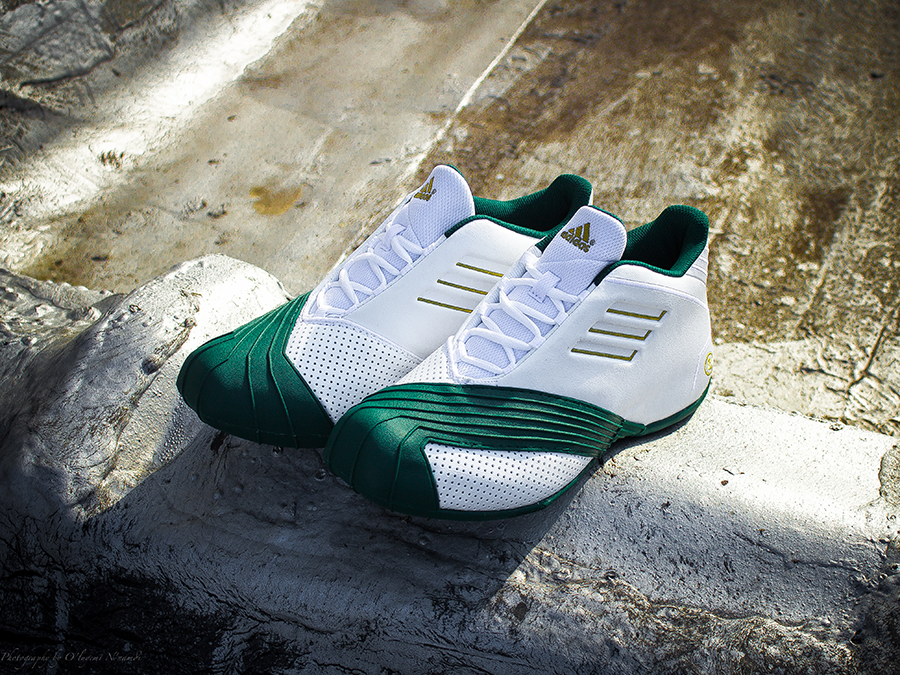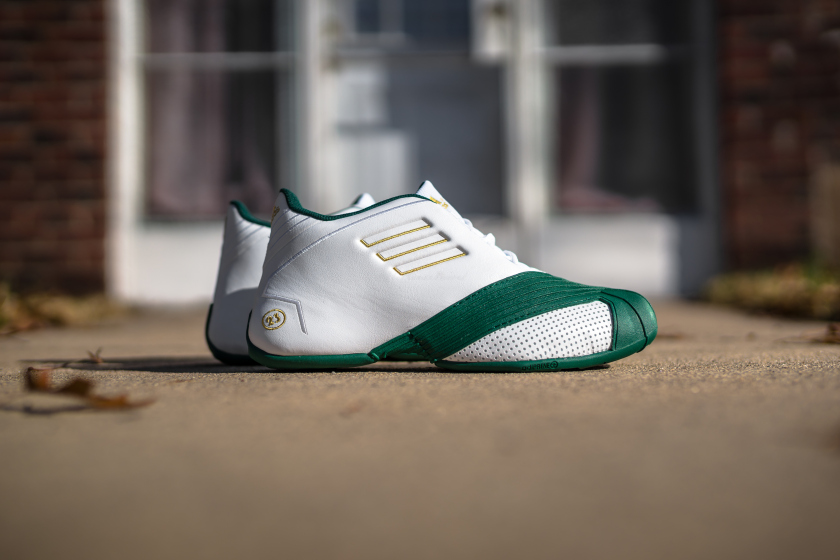

And then there’s the shell toe providing added structural rigidity. Mesh in the tongue and sockliner provide some much-needed ventilation, but expect some sweaty feet if you use this long enough. While it’s not as luxurious-feeling as other synthetic leathers used in other retros, the material is resistant to both dirt and creases, while also tough enough to take a season’s worth of games (and more). Most of the upper is made of synthetic leather (perforated at the toe area for ventilation). The materials used for the T-Mac 1 are all geared towards functionality. If you like that low-to-the-ground cushioning like most of today’s sneakers offer, the T-Mac 1 does provide that. Plus, the cushioning does get better as your pair gets broken in. Plus, you get more than adequate court feel for pulling off those cat-quick movements. It may not provide the same impact protection that today’s shoes are capable of providing, but for me it does provide enough that your feet won’t hurt badly after the game. I haven’t tried out the original release in 2002 so I cannot compare it with the retros that I used for the review, but what I can say is this. The cushioning system used for the T-Mac 1 is Adiprene+ in both the heel and forefoot. It’s simplistic, it’s durable, and it works. The outsole is made using outdoor-grade rubber, so it should last a very long time as long as you take good care of it. Plus, because most of its variants uses solid rubber, it should more than hold its own if you use it outdoors. It may collect dust from time to time, but a simple wipe will improve the grip almost right away. Regardless of which direction you are going, this shoe just sticks very well in a wide range of surfaces. The T-Mac 1 scores high in an originality standpoint, and will undoubtedly stand out now, whether you are wearing it with jerseys or denims.įor traction, Adidas went for a full-length herringbone pattern that provided multi-directional grip.

It also has a low-cut design that almost exposes the ankles, an uncommon approach at that time. It provided a love-it-or-hate-it fit for the T-Mac 1 (more on this later), but it provided a distinct look that’s unlike anything else in the market. It has the iconic Adidas shell toe, and in a unique stroke of form and function, stretched it all the way to the lateral portion of the midfoot. The T-Mac 1 takes a retro-modern approach in design that is very commonly used in the early 2000s. Almost 20 years since it was released, can you still ball hard on the T-Mac 1s? We will answer this question with this performance review. It has since been retro’d a couple of times, including some new colors that brought a new twist to the legend. Up to this day, it remains as one of the most iconic designs to ever come out of the adidas basketball archives. The release of McGrady’s first signature sneaker coincided with his ascension as one of the game’s biggest stars, creating the perfect storm that made the T-Mac 1 among the most popular sneakers of the 2000s.īack in 2002, the T-Mac 1 was worn just about everywhere, in just about every level of the game. It is not until the 2001-2002 season when McGrady got his first signature sneaker, the T-Mac 1. Signed up with the 3 stripes since the start of his NBA career, Tracy McGrady has worn a wide range of great Adidas silhouettes during his early years, including pairs that were popularized by Antoine Walker and Kobe Bryant.


 0 kommentar(er)
0 kommentar(er)
